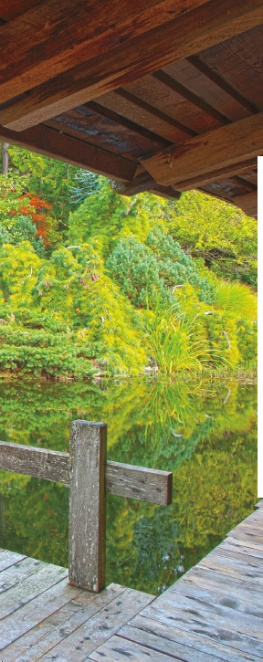Frank Lloyd Wright
on the West Coast
Mark Anthony Wilson
photography by Joel Puliatti

Frank Lloyd Wright on the West Coast
Digital Edition 1.0
Text 2014 Mark Anthony Wilson
Photographs 2014 Joe Puliatti, unless otherwise noted
All rights reserved. No part of this book may be reproduced by any means whatsoever without written permission from the publisher, except brief portions quoted for purpose of review.
Gibbs Smith
P.O. Box 667
Layton, Utah 84041
Orders: 1.800.835.4993
www.gibbs-smith.com
ISBN: 978-1-4236-3448-5
This book is dedicated to my wife, Ann, and my daughter, Elena, who are my greatest inspiration.
Acknowledgments
First of all I want to thank my true friend and partner on this book, Joel Puliatti, whose superb photographs bring Frank Lloyd Wrights buildings to life in a way words by themselves could never do. His creative vision was an invaluable asset on this project. Next, I want to thank two people from the Frank Lloyd Wright Building Conservancy: Deborah Vick, who helped me with the initial contacts for many of the buildings in this book; and Larry Woodin, who showed us through Wrights houses in Washington, and provided critical input for the chapter on Wrights work in the Northwest.
Margo Stipe, archivist for the Frank Lloyd Wright Foundation, was very helpful in giving us permission to use some of Frank Lloyd Wrights blueprints and drawings, which grace several chapters in this book. Scot Zimmerman, photographer, was gracious in providing eight of his color photos for the book. Carol Acquaviva and Laurie Thompson at the Anne T. Kent California Room of the Marin County Free Library helped with my original research and obtaining archival images for the chapter on the Marin County Civic Center.
Crosby Doe, Realtor extraordinaire, was generous with his time in showing us through two of Wrights landmark homes featured in Chapter 4. Anthony Bruce of the Berkeley Architectural Heritage Association provided contact information for the owners of the Frank Lloyd Wright house in Berkeley. David Coffey, caretaker of the George Ablin House in Bakersfield, was also generous with his time, as was Bob Ray, executor of the Buehler Estate in Orinda. Renowned author T. C. Boyle did more than let us spend several hours in his lovely Wright home in Santa Barbara County; he provided wonderful personal commentary on his house as well as on Wright himself. Jeffrey Herr, curator of the Hollyhock House, spent many hours providing information on the history of that site and its original owner, Aline Barnsdall. Also, Trudi Sandmeier, at the USC School of Architecture, arranged access to the Freeman House and provided several archival images for that section of the book. And Dorothy Knight, Konrad Pearce, Eric Berger, Chuck Henderson, Mark Griggs, Ann Corrin, Marsha Vargas Handley, and Vicky Tway all provided archival images and/or family photos from their Wright-designed buildings.
Molly Murphy, general director of the Gordon House in Oregon, provided much historical information, and an archival photo, for the section on that residence. Julie Cain, project coordinator for Stanford Heritage Services, was most generous in showing us through the Hanna House on the Stanford University campus as well as providing historical facts, and Daniel Hartwig at the Stanford University Archives helped me find archival images for that building.
Numerous friends gave their opinions and comments on various sections of this book. My thanks especially to Rheanna Bagley for her enthusiasm, input, and suggestions throughout this project. Tren Bender was also supportive during the early phases of this book. And of course the owners of the dozens of Frank Lloyd Wright buildings included in these pages have my sincere appreciation and gratitude for sharing their beautiful sites with me and Joel, as well as providing interesting information about the history of their buildings.
My brother, John Wilson, provided valuable contact information for some of the Southern California sites. Tom Myers provided contact information and property profiles for several of the California houses. My editor at Gibbs Smith, Bob Cooper, was most helpful whenever I asked his opinion about certain aspects of my manuscript, and offered many suggestions for information that would enhance readers understanding of Wrights work.
Finally, I want to thank my wife, Ann, and my daughter, Elena, for their patience and ideas throughout this project, and for their belief in me and this book. I quite literally could not have finished this endeavor without their loving support.

Millard House, Pasadena, California (192324), view from garden with guesthouse toward main house.










